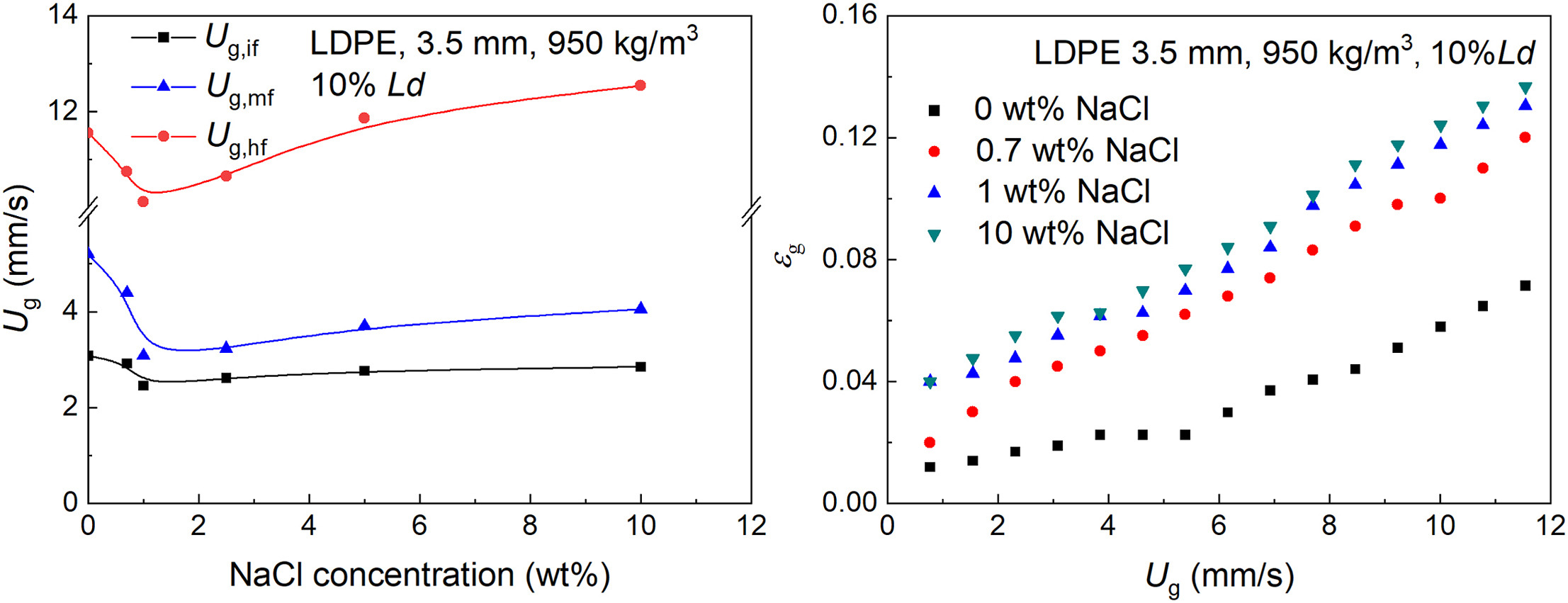• Hydrodynamics of BIFB in NaCl aqueous solution system were studied in detail.
• Flow regimes and fluidization transition gas velocities were identified.
• Fluidization transition gas velocities at various NaCl concentrations were examined.
• Average gas holdup in NaCl solution is higher than in pure water.
Bubble-induced three-phase inverse fluidized bed (BIFB) has attracted significant attention in biological wastewater treatment due to its low energy consumption and high mass transfer efficiency. To extend the application in high-salinity wastewater treatment, a square BIFB was constructed to investigate the flow characteristics in different NaCl concentration systems, including flow regimes, fluidization transition gas velocities, bed expansion ratio, and average phase holdups. The flow regime changes in NaCl solution system are generally consistent with those in the pure water system. The fluidization transition gas velocities initially decrease and then increase as the NaCl concentration increases, with a minimum value observed at approximately 1 wt% NaCl solution. The average gas holdup in the NaCl solution system is significantly higher than in the pure water system and increases with the NaCl concentration. These results could provide basic data and theoretical support for reactor design and its industrial application in high-salinity wastewater treatment.

